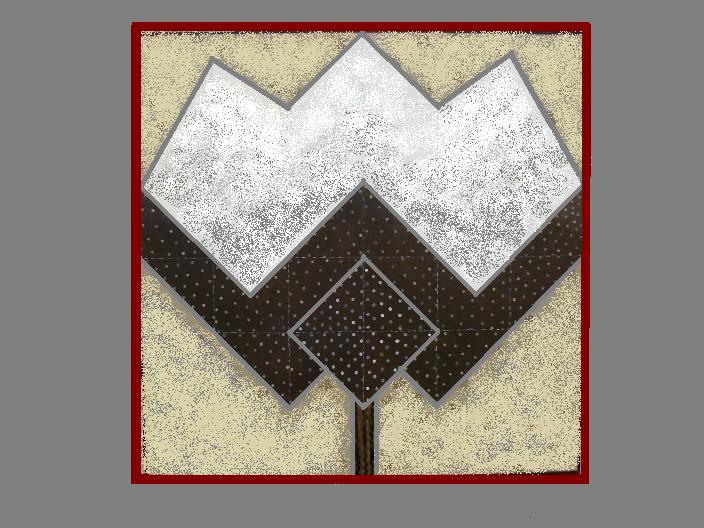 farm recipes
farm recipes
 farm recipes
farm recipes
Grandmother Magers was a wonderful cook. That legacy was passed on to her three daughters, Mamie, Naoma, and Irene. Every meal was a treat, made with fresh "everything" and lots of love. In fact, the women of Dell were ALL good cooks! Now, we're passing a few of their best recipes on to you! Hope you enjoy them!
|
UNDER CONSTRUCTION!!!!!!!!! Buttermilk Pie from Alice Ruddle Magers ca 1930
Buttermilk Pecan Pie
Buttermilk Corn Bread from Aunt Mamie Magers Griffin, ca 1930s
ca 1870
Found in the White House Cookbook belonging to Alice Magers
|
Plum Jam
Wash plums. Cut out any blemishes. In a large enameled pan, place the whole plums. Add a little water. Bring to a slow simmer. When the skins burst and the fruit is soft, remove from heat and run through a sieve. Discard seeds and any remaining skins.
Proceed with the Fruit Pectin Recipe. Please note: Fruit pectin recipes may vary. Be sure and follow the instructions for the brand you have chosen. ************************************************************* Plum Syrup
Prepare pulp as above. Measure equal parts of the pulp and sugar into an enameled pot. Slowly bring to a boil, stirring constantly. As the mixture boils, it will begin to thicken. Continue stirring until the it's reached a desired consistancy. (I cook mine 3-4 minutes.) Pour into sterilized jars and seal. Favorite Bread Pudding with Plum Syrup
Tear into pieces enough French bread (or sourdough, or biscuits, etc.) to fill a 8.5"-9" Pyrex or other glass pan. Fill in as many holes as possible but don't mash bread down. In a bowl, mix together a custard using the Buttermilk Pie recipe above and left. Pour over bread. Let it stand about 5 minutes, or until the bread has soaked up some of the custard. Bake at 350 degrees until done in the center and browned on the sides and bottom. Let cool for 10 minutes before serving. Serve with plum syrup. Yum!!!!!! |
Hunter's Stew
Easy Canned Sauerkraut from Irene Magers Duncan
This is a really, really simple way to make kraut. Pack clean pint glass canning jars with shredded cabbage. Pack it tight! *Note: sugar & vinegar can be adjusted to taste but maintain the same ratio Set jars in a pan and in a dark place for 7-14 days. (I like to leave it about 10 days.) As kraut is fermenting, the seal will be broken and there may be some overflow of liquid. That's ok. Don't panic. You'll see the cabbage turn from green to a whitish, yellow. This is normal. Once the kraut looks ready, process it in a water bath for 20 minutes. The jars will reseal. Leave rings on for 24 hours and then remove rings only. Your kraut will be ready to eat in 2 weeks!
Beans (or Blackeyed Peas) with Tomatoes & Sausage (or Ham) from Irene Magers Duncan & Dru Duncan This recipe is related to the Creole/Cajun food of Louisiana today. It probably comes from both the French American hunter/traders in this area during the 19th century and the African Americans who came to work here from Mississippi and Louisiana. By the 1930s, dishes like this were common in all households, including whites. Many substitutions were made, depending on what was in the pantry. Each cook had their own seasoning technique, too. I'll note a few of the substitutions, but feel free to adjust to your taste. There are seven main ingredients necessary for success: beans or peas, meat for seasoning, onion, garlic, tomatoes, hot pepper +/or hot sauce, bay leaf. The rest of the list can be adjusted to taste. The Basic Recipe: "Throw in a pot", 2 cans or approximately 3.5 cups cooked and drained blackeyed peas, red beans, black beans, kidney beans, or pinto beans. Add a little chopped smoked sausage, ham, or bacon for seasoning; 1/2-1 chopped onion; a clove or 2 of garlic; 1 can, 1 pint or 2 cups tomatoes; 1 tsp. red pepper; 1 tsp. black pepper; 1 1/2 tsp. hot sauce; 1 small bay leaf. In addition, the following ingredients will bring out more flavors. Use any or all:: Chopped celery, parsley, oregano, Worchestershire sauce (1 T.). Salt to taste. Let simmer until the flavors combine and the vegetables are cooked. Don't stir too much or beans/peas will be mushy. Try serving it on top of corn bread or rice. Delicious!
Salmon Cakes from Aunt Emma Ellis Liggett, half sister of Alice Ruddle Magers, ca 1920 This is a simple recipe, dating back to the early 20th century, that works well with canned salmon, canned tuna or canned mackerel. Aunt Emma and Uncle Will moved to Dell ca 1919, where Emma ran a boarding house in their home. She was known everywhere for her home cooking. She served meals three times per day, first come, first serve. There were never any left-overs, according to the family stories. When I was growing up in Dell, Daddy fished at Big Lake during the spring, summer, and fall--when the fish were biting. What we couldn't eat, Mom froze, covered in water, using clean milk cartons. When we began running low on fish, Mom turned to the canned salmon and made salmon cakes. She believed we needed fish at least once a week, a concept scientists agree with today! Be sure and make plenty! These are light and delicious! You can't eat just one!
|
Links to: dellarkansas.com The Dell History Website Curtis C. Duncan Photography Our Cotton Patch, LLC, Dell, Arkansas |
 For
questions, or to send information, contact: backatthefarm1938@yahoo.com For
questions, or to send information, contact: backatthefarm1938@yahoo.com |
We each have our place in time, and if we live right, we change that place and that time for the better. |
| MsCoAR USGen Web |